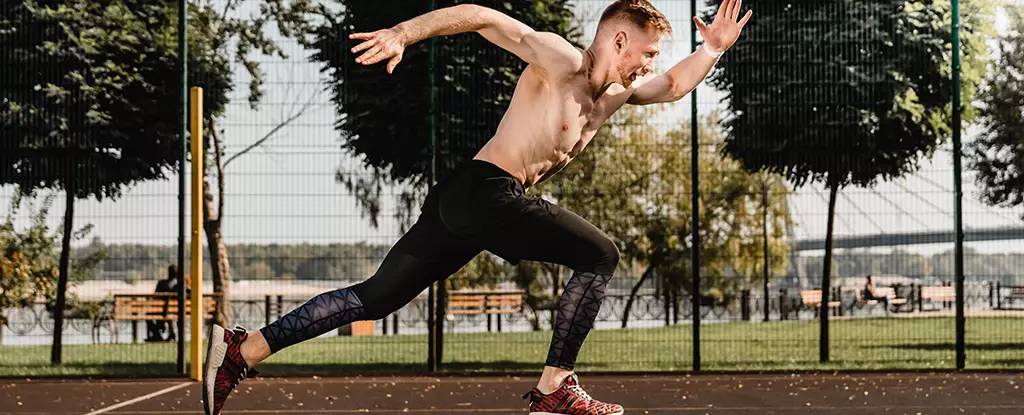For fitness enthusiasts and dedicated athletes, the pursuit of peak physical performance is paramount. However, recent research has unveiled an unsettling paradox: excessive vigorous exercise might compromise the immune system’s efficiency, at least temporarily. This insight emerges from a 2023 study conducted by the Pacific Northwest National Laboratory (PNNL) that analyzed over 4,700 fluid molecules post-exercise, particularly focusing on firefighters who undertake rigorous fitness training. The findings serve as a cautionary reminder that even those who are physically fit are not exempt from immune system vulnerabilities immediately following intense physical exertion.
Ernesto Nakayasu, a biomedical scientist at PNNL, emphasizes that “people who are very fit might be more prone to viral respiratory infections immediately after vigorous exercise.” This provocative statement raises questions about the very activities that constitute our health regime. If vigorous exercise can create an environment conducive to illness immediately post-workout, then what risks do we overlook in our quest for endurance and athleticism?
Debunking Myths: The Fine Line Between Exercise and Immunity
The prevailing notion that moderate exercise reinforces our immune defenses is well-accepted. However, the implications of high-intensity workouts have long been debated. The 2023 study adds fuel to this ongoing discourse, revealing a potential trade-off: while we acknowledge the long-term benefits of fitness, we must consider the immediate consequences of extreme physical exertion.
It’s crucial to distinguish between correlation and causation in this context. Though some findings suggest that athletes experience higher instances of upper respiratory tract infections after intense physical activities, the absence of definitive causative data complicates the narrative. The PNNL study aimed to dissect this relationship further by examining the biological changes in firefighters following a grueling exercise regimen that involved hauling heavy gear over challenging terrain.
Kristin Burnum-Johnson, a bioanalytical chemist at PNNL, articulated the research goal succinctly: “We wanted to take an in-depth look at what’s happening in the body and see if we’re able to detect danger from exhaustion in its earliest stages.” This approach not only underscores the complexity of the issues at hand but also reflects a growing awareness in the fitness community about the nuanced effects of exercise on health.
The Immune Response: A Dynamic Balance
The findings from the study indicated stark shifts in immune markers among firefighters after their high-intensity workouts. Researchers noted a decrease in molecules associated with inflammation, an intriguing outcome given that inflammation is a vital part of our immune response. Simultaneously, the study observed an increase in opiorphin, a substance that enhances blood flow and may serve to improve oxygen delivery to muscles under duress.
Yet, what does this alteration in immune marker levels signify for an individual’s health? While the decrease in inflammatory molecules may suggest a temporary suppression of the immune system, it could also reflect an adaptive mechanism aimed at optimizing our physiological response to exercise-related stresses. This is where interpretation becomes critical; is the body suppressing immune function or simply adjusting to meet heightened demands?
The complexity amplifies when addressing the observed changes in the firefighters’ oral microbiome. While the spike in antimicrobial peptides suggested a counteracting mechanism to the purported immune suppression, the inability of these peptides to inhibit E. coli growth indicates that the oral cavity’s natural defenses might be limited post-exercise. The ongoing debate among scientists about whether these shifts represent immune suppression or simply a heightened state of immune context highlights the intricacies of our bodily systems.
What Lies Ahead: The Need for Broader Research
Though the findings of this study amplify existing concerns regarding extreme exercise and immune health, they do not paint a complete picture. Researchers underline the importance of broader studies involving diverse populations and various physical demands. The firefighters’ unique exposure to pollutants during their duties may also skew immune responses in ways that are not representative of the average athlete or fitness enthusiast.
Moreover, this research specifically targeted healthy, active men, thus leaving open questions about the effects of intense exercise on different demographics, including women, the elderly, and those with pre-existing health conditions. The landscape of exercise science is ever-evolving, and understanding the full range of our bodies’ reactions to strenuous activities is vital for informed practice.
Ultimately, as we strive to maximize the benefits of our workouts, it’s imperative to acknowledge the potential risks. Balancing our ambitions with awareness about the relationship between vigorous exercise and immune function will lead to healthier practices for both athletes and everyday individuals. In this quest for optimal health, listening to our bodies and adjusting our routines may be the key to ensuring that we reap the benefits of exercise without suffering from its hidden tolls.

